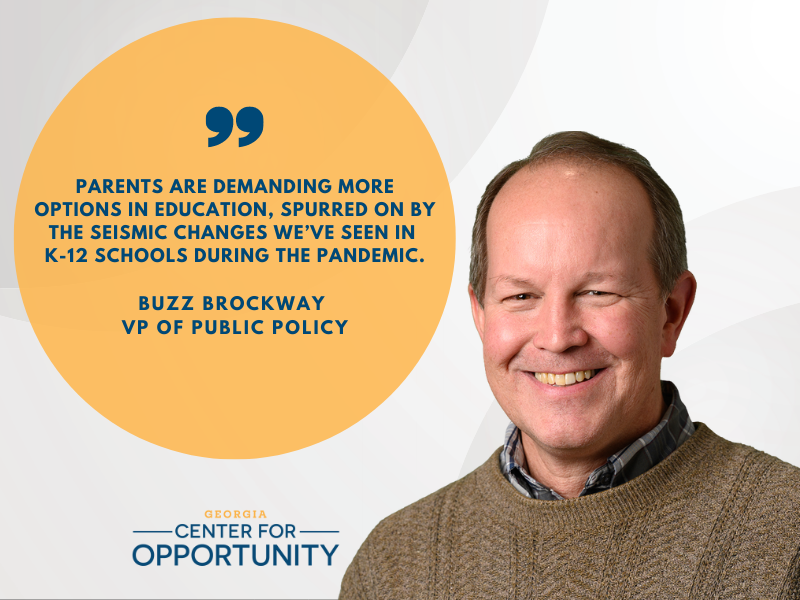This year, the Georgia Legislature is poised to once again consider creating Education Scholarship Accounts (ESAs) for families statewide. These scholarships would allocate funds to allow parents to choose the best educational option for their child’s unique needs.
Expanding educational access should be a welcome development for lawmakers and citizens alike. After all, who could argue with the idea of making educational opportunities more accessible? Unfortunately, expanding access to a wider variety of schools and academic opportunities can be an issue that divides lawmakers not only along party lines, but along the lines of an urban-rural divide as well.
For instance, Georgia lawmakers who represent rural areas have raised concerns about the impact that expanded educational opportunities could have on their local school districts. The argument goes like this: Rural areas tend to lack access to private or charter schools compared to urban areas, so efforts to increase the diversity of educational options will end up siphoning money away from traditional public schools, the one and only option available in rural districts.
As the Georgia Legislature is set to take up a bill that would create ESAs, now is a great time to debunk the myth that educational opportunity simply doesn’t benefit rural areas.
Let’s jump right into it.
Myth 1: There aren’t enough private schools near rural areas to justify ESAs
In a December 2022 interview with Conduit News, Dr. Patrick Wolf busted the myth that families living in rural areas don’t have access to private schools. He cited a 2017 Brookings Institution survey that revealed 69% of rural families live within 10 miles’ driving distance of a private school.
“Ten miles is easy commuting distance, especially when you live out in the sticks like I do,” said Wolf. “So, the overwhelming majority of families in rural areas do have access to private schools.”
Of course, when there is demand for any product, service, or offering, society finds ways to meet those demands. The same is true for educational opportunities. Wolf explains: “The other thing that happens when school choice programs are launched statewide is more private schools spring up because there’s a greater opportunity to serve students. When you increase the demand for school choice by making it more feasible to more families, supply emerges to meet that demand. It’s just straight economics.”
In other words, ESAs could potentially open the doors to establishing more private schools in Georgia, in both rural and urban areas.
At the time of this writing, there are 824 private schools across the state of Georgia, with 152,851 students enrolled. During 2021-2022, there were 90 charter schools in the state as well. While that number is dwarfed by Georgia’s public schools (2,308, with 1,728,049 students enrolled), it’s still significant.
Broadening educational opportunity would effectively give parents in rural areas a reason to demand more options where they live. If Wolf’s assessment of supply and demand is correct (and we believe it is), then we can expect that more rural families will benefit from private schools in the coming years as a direct result of ESAs.
Myth 2: Disadvantaged kids don’t benefit from private or charter schools
Opponents of expanded educational opportunity often argue that disadvantaged kids don’t benefit from it. The National Coalition for Public Education argues that vouchers hurt rural areas not only because fewer students attend public schools, but also because the students themselves have to take on heavier time and economic costs in order to attend private and charter schools. They also argue that public schools are the facilities best equipped to serve diverse student populations, including minorities, students with special needs, and students from low-income areas.
But the previously cited Brookings Institution survey revealed that the majority of rural families do have reasonable access to a private school. Research also shows that disadvantaged students do, indeed, benefit from expanded educational opportunity. Students in charter schools tend to perform better academically than their peers in public schools. What’s more, low-income and ethnic minority students showed the most significant academic gains when enrolled in charter schools.
Keep in mind, too, that ESAs would allow parents to allocate funds to their children’s specific educational needs. That means families can use those funds to choose a school that is the best fit for that child. While lobbying groups and district superintendents may argue that state-funded schools are the best equipped to handle those needs, parents are ultimately the primary authority on what their children need to be successful.






